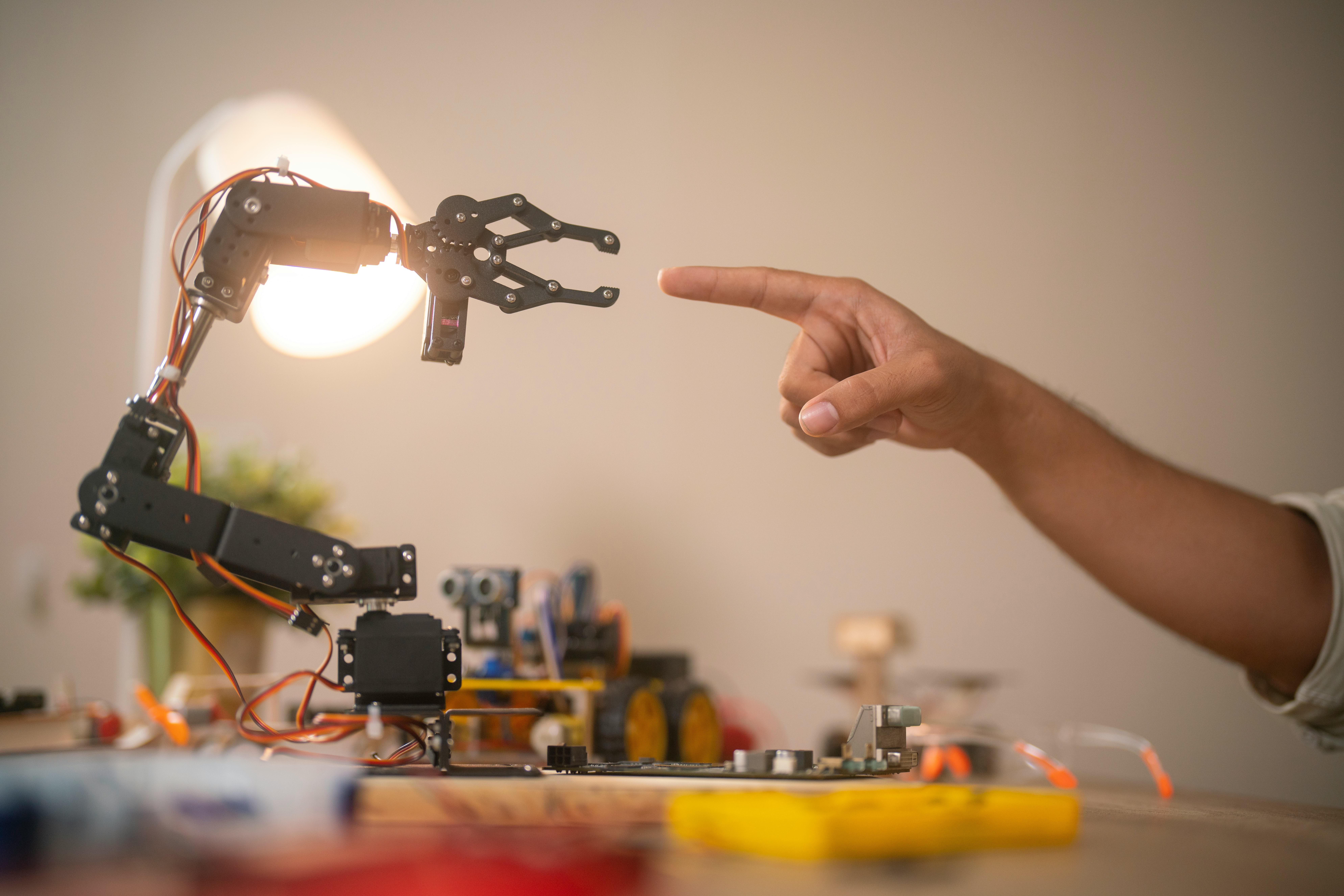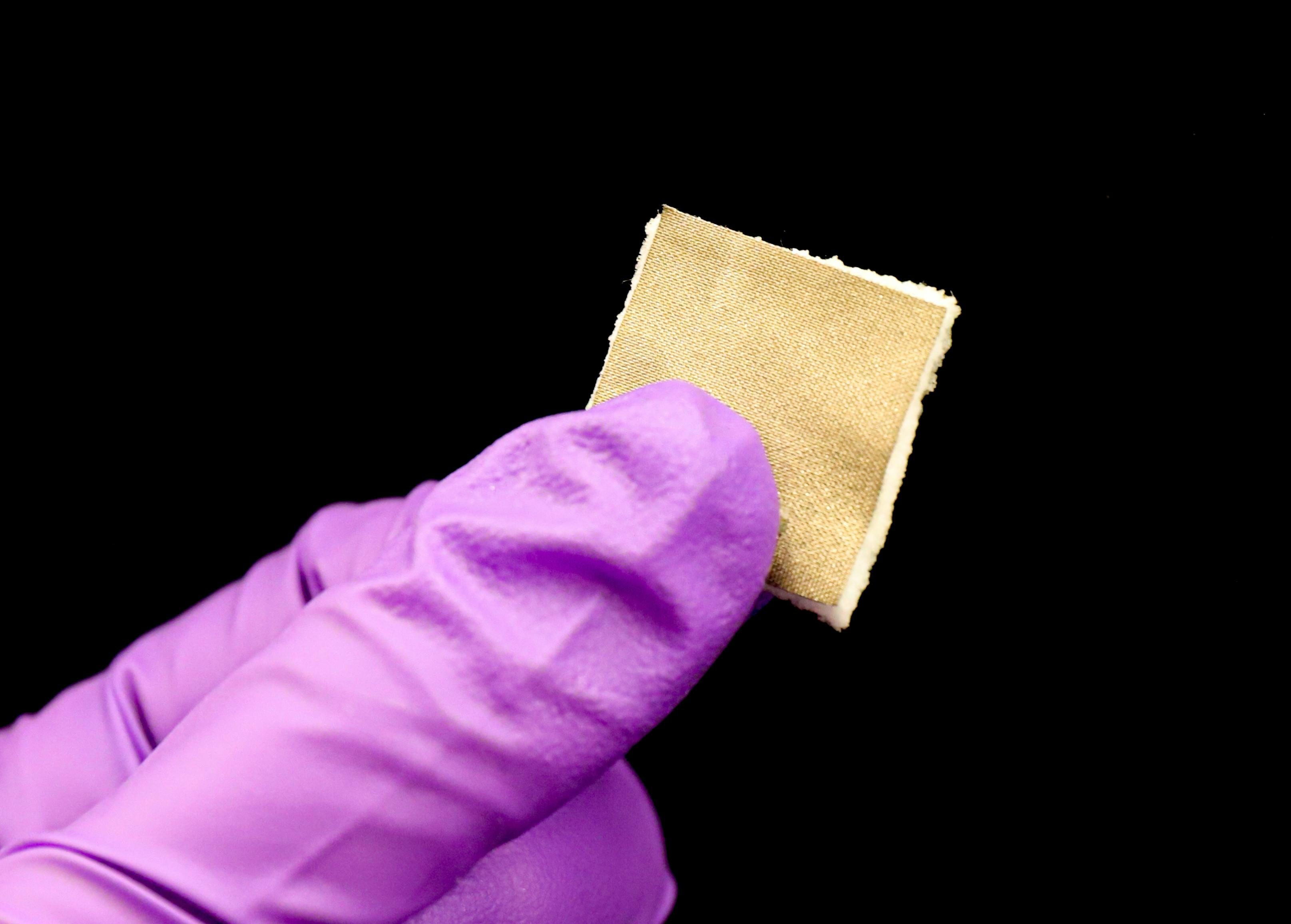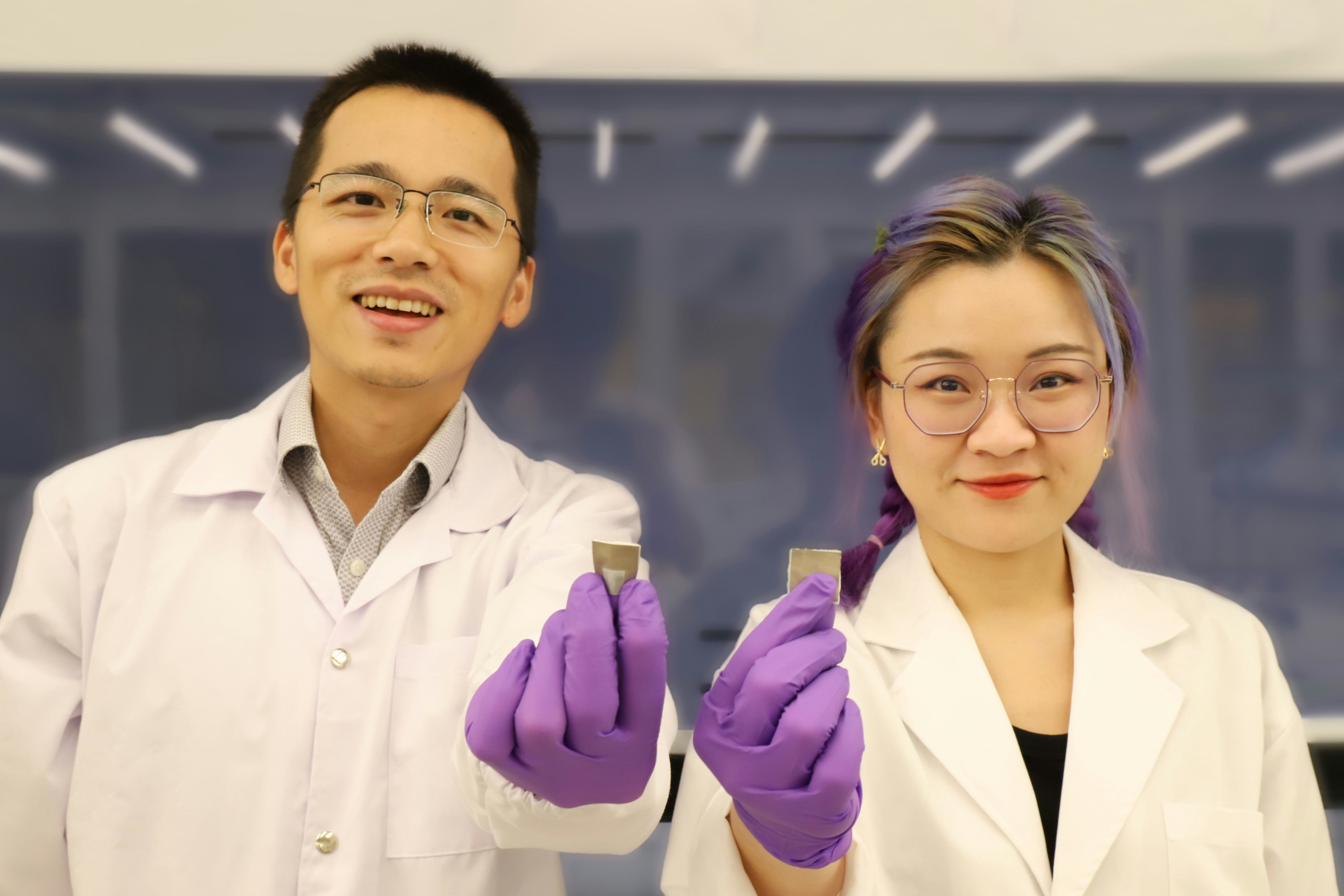
If you had to rank the most powerful sense, which would you choose? Over 88 percent of participants in a 2016 survey ranked vision as their most important sense, followed by hearing in a distant second. In fact, taste, smell, and touch are often overlooked entirely.
But touch matters a lot — in ways most people don’t always recognize. For instance, it helps us steer clear of hot stoves, figure out an object’s weight and composition, and, of course, tap away at our smartphones and tablets. In fact, scientists are paying close attention to touch when developing futuristic robots and other electronics.
Now, researchers have developed a new electronic skin that may even be more touch-sensitive than human hands. “Even without touching it, it is able to tell whether an object is further away or closer,” Yifan Wang, a mechanical engineer at Nanyang Technological University in Singapore and co-author of the study, tells Inverse.
Wang and his team hope that their super-sensitive skin will help ramp up robotics, improve touch-screen interfaces, and even help people regain their sense of touch. The results were recently published in the journal Small.

Here’s the background — Artificial skin technology has taken off in the last couple of years thanks to the rise of increasingly sophisticated 3D-printing technologies.
The goal of most types of artificial skin is a bit creepy: to give robots or other machines the sense of human touch. For example, in 2020, a team of engineers in Singapore unveiled a skin that could read Braille with more than 90 percent accuracy. That same year, a group of Australian scientists developed one that could sense pain.
Even more recently, scientists have begun looking beyond the limits of our largest and most exposed organ by designing artificial skins. For example, one new technology can even detect toxic chemicals with touch alone. But with this latest breakthrough from Wang and his colleagues, physical touch isn’t even required.
What’s new — Wang’s team wanted to take artificial skin sensitivity to the next level while maintaining a simple, easy-to-produce design. “The composition of the artificial skin is actually quite straightforward,” he says.
Essentially, the skin consists of two thin, flexible fabric electrodes sandwiched around a layer of spongy material soaked in ion-sensitive liquid. This stack of materials acts as a capacitor — meaning it can pick up on changes in pressure or differences in charge between electrodes with extreme sensitivity.
In fact, the faux skin is so sensitive that it can tell when it’s near an object without actually touching it — its porous ion layer has the shark-like ability to catch the subtle disruptions to its electric field caused by nearby objects.

The authors tested this skill with a robotic finger sheathed in the new artificial skin. They measured what’s called the capacitance signal, or the ability to store an electric charge, as it approached and touched different objects, including a leaf, banana, piece of paper, glass, and a human hand.
They tested this skill with a robotic finger sheathed in the new artificial skin. It noted objects’ capacitance as it approached and touched different items, including a leaf, banana, piece of paper, glass, and a human hand.
Their results showed that the skin could indeed detect objects before it touched them. Thanks to varying levels of capacitance, nearby items revealed properties like their size, surface area, and density.
And when the robot finger touched the objects directly, it was able to differentiate between a variety of textures (and presumably weights) based on pressure data.
Why it matters — The ability to distinguish between objects based on touch alone has huge potential in the realm of robotics. It could, for example, help robot factory workers pack or assemble a huge array of different objects on the fly. It could also improve human control of electronics like e-readers and video game platforms. It may even enable burn survivors or people who use prosthetics to regain a sense of touch.
“If we are able to put this artificial skin on their own bodies, we may be able to create this artificial type of sensation for them,” Wang says.
What’s next — The artificial skin requires a bit more work. At the moment, it can’t differentiate between hot or cold temperatures, but Wang says he should be able to add that capability in the future with relatively little fuss.
For now, they are focusing on finding additional commercial applications — and companies to help develop them.







